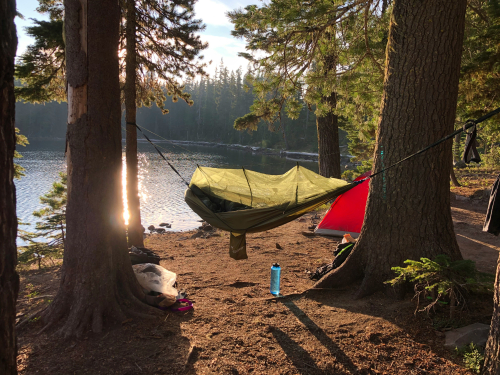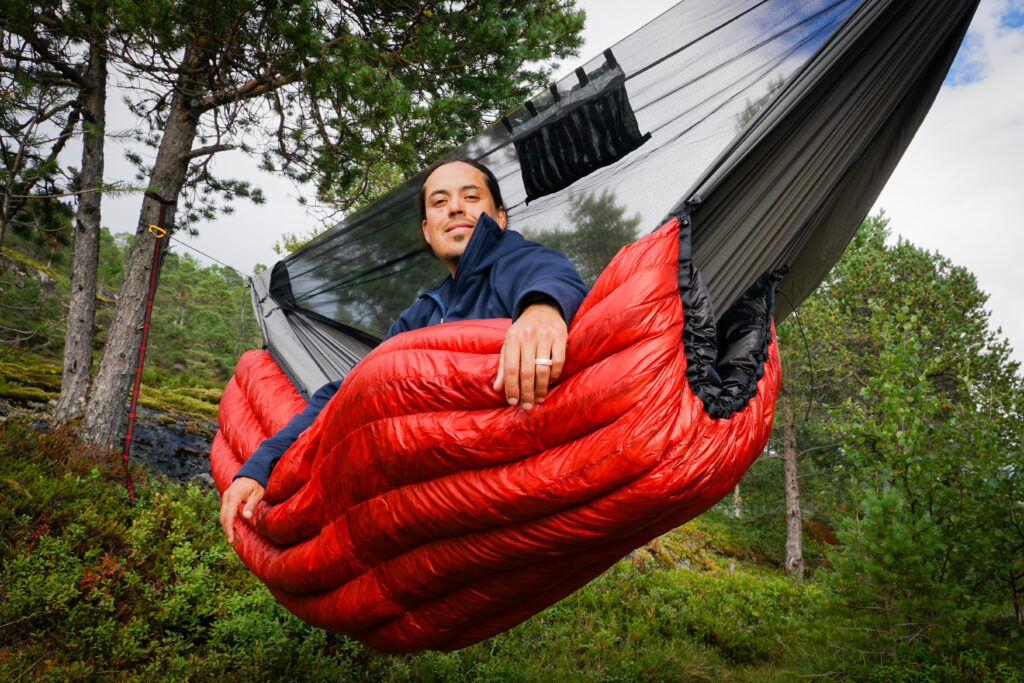Alert! 3 Hammock Camping Mistakes You MUST Avoid

Hammock camping has been gaining popularity among outdoor enthusiasts in recent years. The primary appeal of hammock camping lies in its comfort and the ability to sleep better compared to sleeping on the ground in a traditional tent.
Hammocks offer a more comfortable sleeping surface that conforms to the body’s shape, reducing pressure points and providing a relaxing retreat for sore muscles after a long day of hiking.
Additionally, hammock camping allows for more versatile campsite selection, as they can be set up on uneven, rocky, or damp ground where traditional tents would be difficult to pitch.
Importance of Avoiding Common Mistakes
To fully enjoy the benefits of hammock camping and ensure a safe and comfortable experience, it is crucial to avoid common mistakes. Proper setup and the use of appropriate gear can significantly enhance the overall camping experience.
Failing to address potential issues such as insulation, weather protection, and suspension can lead to discomfort, cold nights, and even safety concerns.
Choosing the Wrong Trees
One of the most common mistakes made by hammock campers is selecting unsuitable trees for hanging their hammocks. The distance between the trees is crucial, as they need to be spaced 12-18 feet apart to provide the proper tension and support.
Additionally, the health and stability of the trees are essential considerations. Campers should avoid trees that are diseased, damaged, or too thin, as they may not be able to withstand the weight of the hammock and the camper.
Incorrect Suspension System
The suspension system used to attach the hammock to the trees is another area where mistakes can occur. Many novice hammock campers make the mistake of using ropes instead of the recommended tree straps. Ropes can damage the bark and potentially harm the trees, whereas straps are designed to distribute the weight evenly and minimize any impact on the trees.
Proper knot techniques are also essential to ensure a secure and stable setup.
Inadequate Height and Angle
The height and angle at which the hammock is hung can significantly impact the comfort and safety of the camping experience. The ideal hanging height is typically around 18 inches off the ground, allowing for a comfortable entry and exit.
The correct sag, or angle, of the hammock is also crucial, as too much or too little sag can lead to discomfort and instability.
By addressing these common mistakes, hammock campers can ensure a safe, comfortable, and enjoyable outdoor experience.
Underestimating Temperature Changes
One of the most common mistakes made by hammock campers is underestimating the importance of proper insulation, especially on the bottom of the hammock. Using an underquilt or sleeping pad is crucial for maintaining warmth and preventing heat loss to the cold air beneath the hammock.
Additionally, choosing an appropriate sleeping bag or top quilt that matches the expected temperature range is essential for staying comfortable throughout the night.
Lack of Rain Protection
Failing to prepare for rain can quickly turn a pleasant camping experience into a miserable one. Selecting a suitable rainfly or tarp that provides adequate coverage is crucial for keeping the hammock and its occupants dry.
Proper tarp setup techniques, such as using the correct angle and tension, are also important for maximizing the tarp’s effectiveness and preventing water from pooling.
Overlooking Wind and Bug Protection
Wind and bugs can be significant sources of discomfort and disturbance while hammock camping. Using windbreaks, such as trees or natural terrain features, or carefully selecting a campsite that offers natural protection from the wind can help create a more comfortable environment.
Employing bug nets, either integrated into the hammock or as a separate accessory, is an effective way to keep insects at bay and ensure a peaceful night’s sleep.
By addressing these common mistakes and prioritizing proper insulation, rain protection, and wind and bug protection, hammock campers can ensure a safe, comfortable, and enjoyable outdoor experience.
Assessing Terrain and Vegetation
When selecting a hammock camping site, it is crucial to consider the terrain and vegetation. Avoid low-lying or flood-prone areas, as they can become waterlogged during heavy rain or snowmelt.
Instead, look for higher ground that offers natural drainage and protection from potential flooding. Additionally, be mindful of dead branches or trees that could pose a safety hazard, especially during windy conditions.
Carefully inspect the area for any potential hazards and choose a location with sturdy, healthy trees that can support your hammock setup.
Considering Proximity to Water Sources
While having a water source nearby can be convenient, it is essential to balance accessibility with safety and environmental considerations. Ensure that your campsite is at least 200 feet (60 meters) away from any water sources, such as lakes, rivers, or streams, to minimize the impact on the ecosystem and comply with leave-no-trace principles.
If possible, choose a location that offers easy access to water for cooking and cleaning purposes, but avoid setting up camp directly on the shoreline.
Evaluating Accessibility and Privacy
When selecting a hammock camping site, consider the accessibility of the location and the level of privacy you desire. Choose a spot that is easily accessible from the trail or road, making it easier to transport your gear and set up camp.
At the same time, seek out a quiet, secluded area that offers a sense of privacy and seclusion. Avoid areas with heavy foot traffic or near busy campsites to ensure a peaceful and undisturbed experience.
By carefully considering these factors, you can ensure a safe, comfortable, and environmentally responsible hammock camping experience.
Recap of Key Points
Hammock camping offers a unique and comfortable outdoor experience, but it requires careful attention to detail to ensure a safe and enjoyable adventure. Proper hammock setup, including selecting sturdy trees, using appropriate suspension systems, and maintaining the correct height and angle, is crucial for a comfortable night’s sleep. Additionally, being prepared for weather changes by packing the right insulation, rain protection, and wind/bug barriers can make all the difference in staying warm, dry, and undisturbed. Lastly, thoughtful site selection, considering factors like terrain, proximity to water sources, and potential hazards, can minimize risks and maximize the overall camping experience.
Encouragement for Safe and Enjoyable Hammock Camping
When done correctly, hammock camping can provide an unparalleled connection with nature and a level of comfort that traditional tent camping simply cannot match. The gentle sway of the hammock, the serene views through the trees, and the sense of freedom it offers make it a truly unique and rewarding outdoor experience. We encourage our readers to embrace the adventure and share their own hammock camping stories and tips, as the hammock camping community is filled with passionate individuals eager to learn from one another.
Create Unforgettable Memories
To ensure a safe and enjoyable hammock camping experience, we urge our readers to thoroughly prepare and educate themselves on best practices. Invest in high-quality hammock gear, familiarize yourself with setup techniques, and research the specific considerations for your camping destination. By doing so, you’ll be well on your way to unlocking the full potential of hammock camping and creating unforgettable memories in the great outdoors. For further learning and gear recommendations, be sure to explore our comprehensive resources on hammock camping.
You may also be interested in: How Hammock Camping Encourages Better Sleep – Hammock Gear
Embark on your next adventure with Hammock Gear’s custom quilts! Tailor your comfort for the wild – choose your style, warmth, and size to craft your perfect eco-friendly outdoor companion, or grab a complete ultralight kit. Made in the USA for unparalleled quality and comfort. Trusted since 2009. Shop Now and tap into a community of nature lovers!⭐
Related Posts
The Best Camping Hammocks of 2024 – A Buyer’s Guide by Hammock Gear
A good camping hammock can completely transform how you experience…
Can Napping Hurt You? Unveiling the Pros & Cons of Daily Zzz’s
Napping, the act of taking a brief sleep during the…


